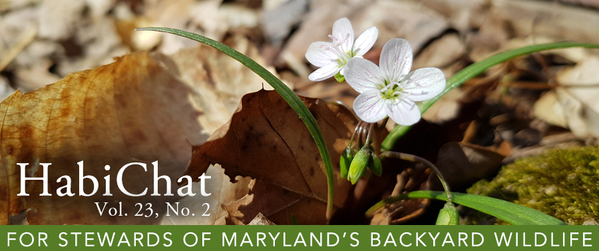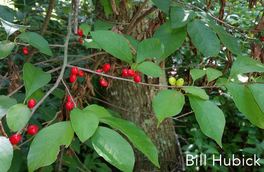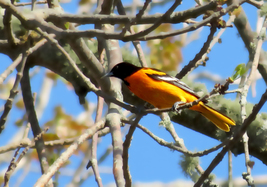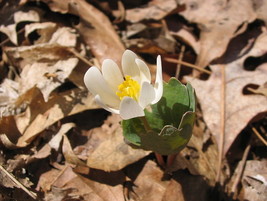
|
|
|
|
Happy Spring HabiChat fans!
Spring has officially sprung in Maryland. The migratory birds, like warblers, are currently making their way through our forest. Early nesting bee species are emerging from their nests and are pollinating spring wildflowers. Young wildlife can be seen in the garden. I’m so excited for all of the spring phenomena at play!
In this edition of HabiChat, learn about our native spicebush and the beautiful lepidoptera it supports, as well as a little more information about our state bird, the Baltimore oriole. This edition will also focus on ways to rethink spring by embracing some of our early flowering native plants. Finally, this HabiChat will introduce you to a couple of books that might be of interest for enhancing your backyard wildlife habitat.
Spring is such a busy time in our gardens. If you are interested in making your garden more pollinator friendly, check out the Spring 2015 HabiChat issue. In addition, keep in mind that young wildlife will begin to be a common sight in backyards. Last year’s Spring HabiChat focused on bird-safe windows and deer resistant plants for pollinators. Check out our page, Think Twice Before Rescuing Young Wildlife, to learn about best practices when it comes to young animals.
As a final note, the University of Maryland Extension is holding a General Forestry Course for Maryland landowners. The goal of the course is for the landowner to design a forest stewardship plan framework for their property. The course covers all aspects of forests and forest management. Registration opens June 1 and the course runs from Sept 1 to Dec 15. The cost is $150. For more information, please visit the University of Maryland Extension site.
Happy Habitats,
Kerry Wixted
|
|
|

Native Plant Profile: Spicebush
Spicebush is a medium-sized native shrub in the laurel family. It has a rounded habit and grows up to 15 feet. Spicebush can tolerate dry to wet soils and prefers to grow in part to full shade. It is found in every county in Maryland, but it grows best in basic soils.
The twigs of this plant have a spicy citrus smell that acts as a deterrent for potential herbivores.
|

Native Animal Profile: Baltimore Oriole
With striking orange and black plumage, it is no wonder the Baltimore Oriole was selected
as Maryland’s state bird. The male’s colors resemble the coat of arms for Sir George Calvert, First Lord of Baltimore.
Baltimore Orioles can be found throughout Maryland in spring and summer months, though they are not as common on the coastal plain. In the winter, most orioles travel to central and South America.
|

Rethinking Spring with Native Plants
Crocuses and daffodils appear this time of year as harbingers of spring, but these non-native plants in our landscapes offer little benefit for our native wildlife. There are many native plants, however, which co-evolved with our local wildlife.
Looking for information about gardening with natives? Check out this list of some early blooming plants that provide spring nectar and pollen resources.
|

Books for Backyard Wildlife Habitat Gardeners
I have a confession: I love books! I’ve always been a bookworm and I often bring books as reference materials to my presentations for fellow book lovers.
If you are like me, and are interested in adding to your backyard book collection, check out a few of my favorite habitat gardening reads.
|
|
|
|
|
|
Wild Acres is a voluntary program that encourages residents to create backyard wildlife habitat. For more winter tips and tricks, check out the HabiChat archives.
|
|
Home News Licenses Photo Contest Nursery Park Reservations Store
|
|
|